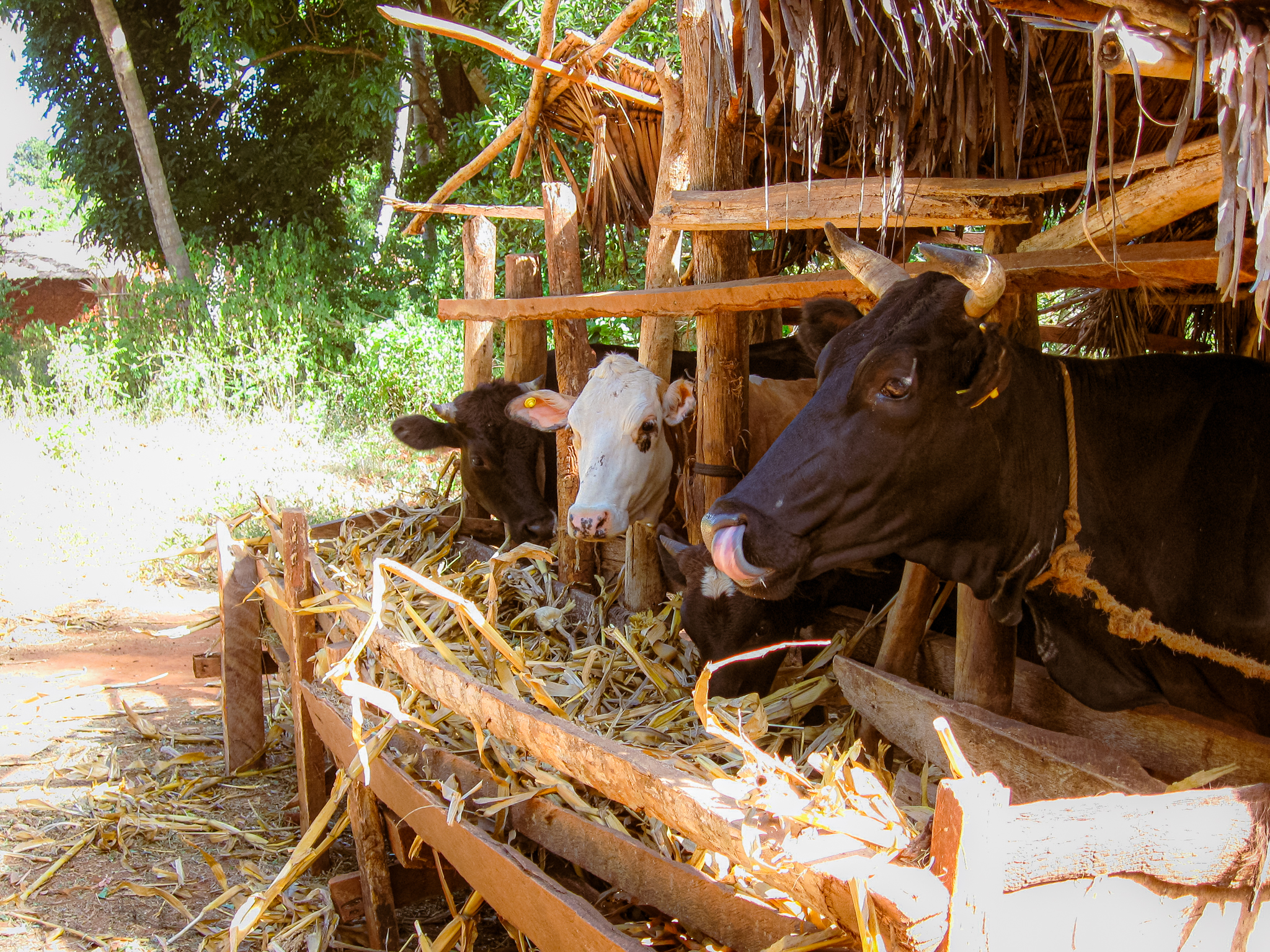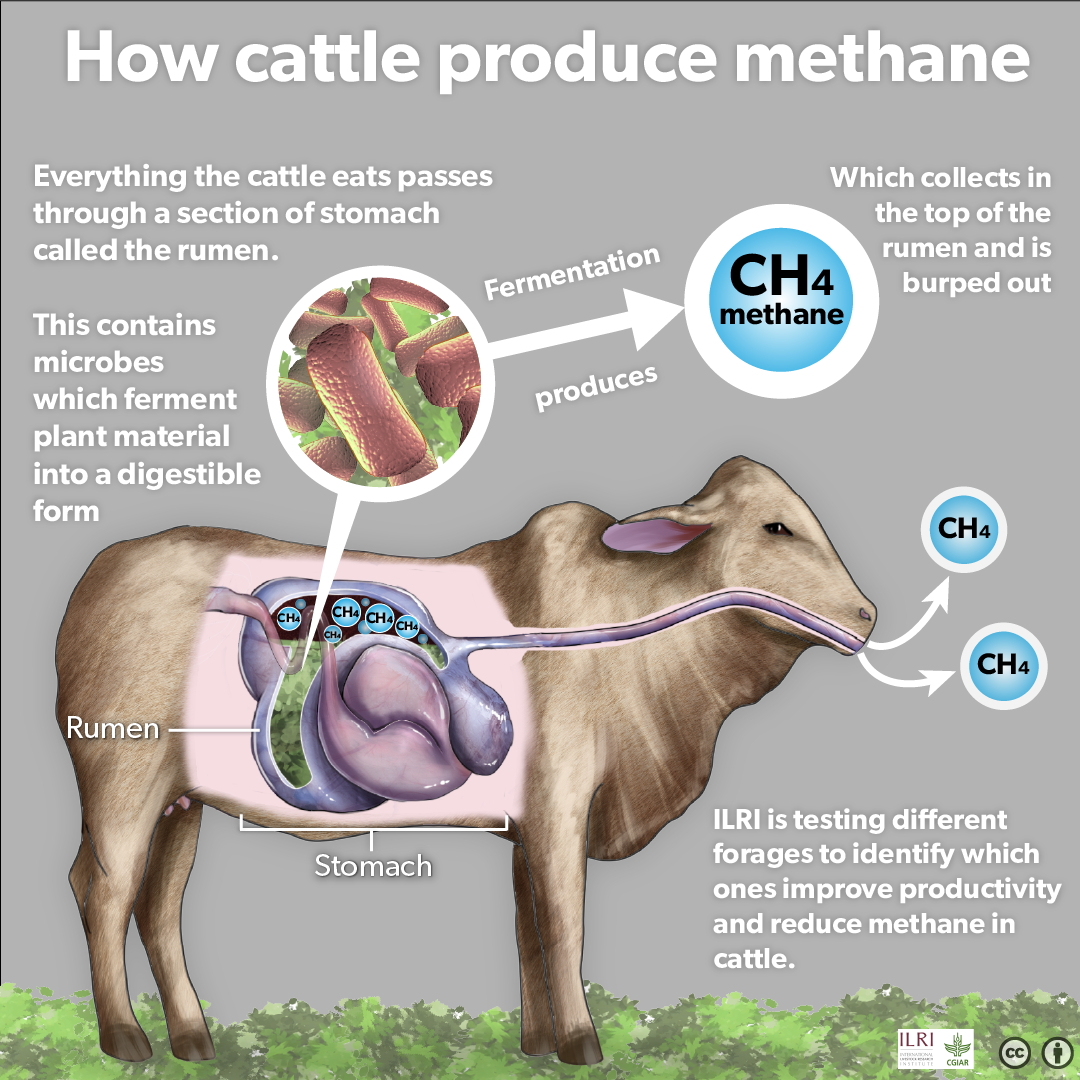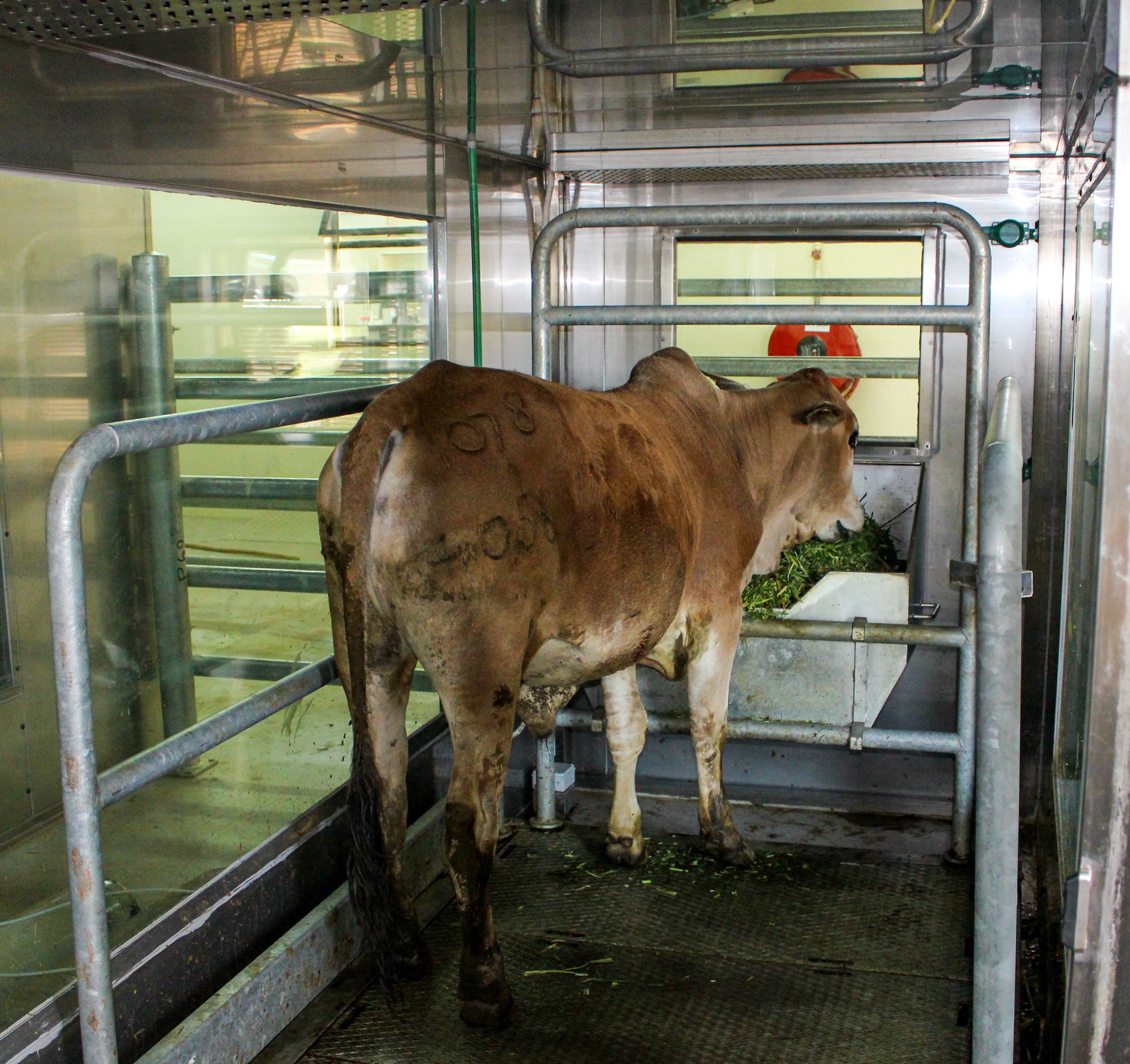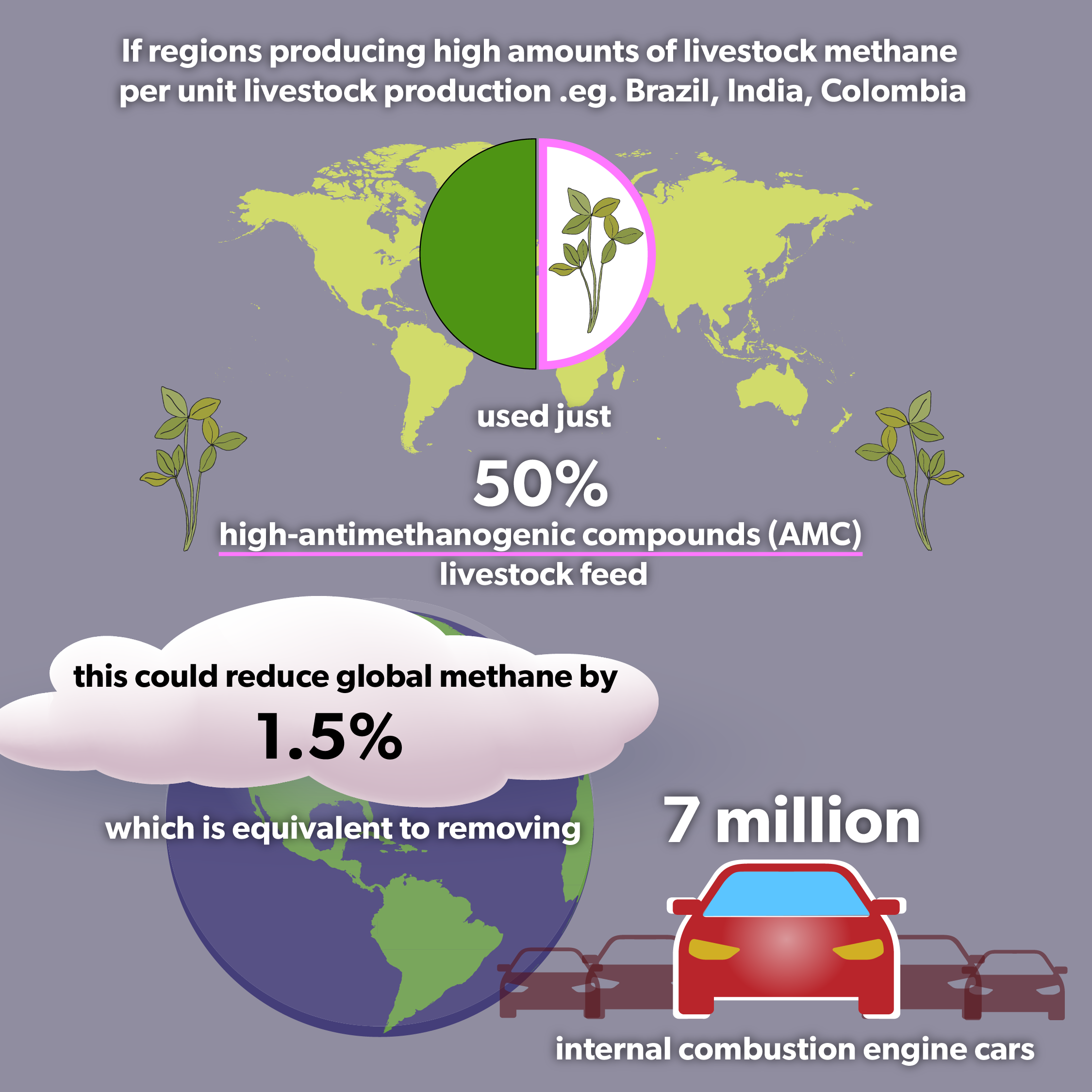Ruminant livestock eat and digest plants, producing meat and milk which are invaluable for the nutrition and livelihoods of millions of people around the world. But there is a considerable gap in productivity when comparing livestock in low- to middle-income countries (LMICs) to high-income countries (HICs).

One reason for this gap is what animals are fed. Livestock in LMICs are more likely to be fed lower quality crop materials like crop residues (stover, byproducts of grain), or allowed to graze on wild grasses and forages. Such material can be low in nutritional value and digestibility, meaning a cow would have to eat a high amount to produce a certain measure of milk. And they can get full before they can produce that amount.
But ruminant digestion also produces methane (CH4), with livestock in LMICs producing significantly more emissions per unit of meat or milk than livestock in HICs.

Agriculture currently creates 42% of global methane emissions, and some 39% of this is enteric methane, produced through ruminant digestion. Can we improve the feed for livestock in LMICs, raise their productivity, and reduce the intensity of methane emissions, for a more food-secure and sustainable future?
CGIAR scientists think we can, by discovering new feed possibilities from nature.
How?
Ruminants rely on microbial communities that live inside their gut to digest their food. It is this process which produces waste methane. But certain plants can cause a lower level of methane to be produced, due to the presence of ‘antimethanogenic’ compounds (AMC).

In a project that will run from 2023-2028, led by the Alliance of Bioversity International and CIAT (the Alliance), in collaboration with the International Livestock Research Institute (ILRI), the International Center for Agricultural Research in the Dry Areas (ICARDA), their Genebanks, and the Global Methane Hub, scientists are trying to identify which plants contain these and could be scaled up into commercial feed cultivars. And since some plants may not be scalable, they are also looking at another angle—placing the genetic trait responsible for the AMC into an existing cultivar.
This is possible because these three CGIAR centres already have excellent ‘reference libraries’ of plant material to look through. For example the ILRI Forage Genebank in Addis Ababa, Ethiopia stores the world’s largest collection of tropical grasses and forages. Until now, very few of the ILRI Forage Genebank’s 19,000 accessions have been evaluated for AMCs.
As more food and farming is needed for the world’s rapidly growing population, the success of the project could have enormous impact.
The process
AMCs broadly work in two ways. They can directly affect the workings of methane-producing bacteria in the gut, or they can alter the environment of the gut itself.
As the presence of AMCs is written in a plant’s genetic code, the first phase of the research is to discover forages that contain AMCs. The second phase will be to develop the methane-inhibiting capacity of the forage further, through selective breeding or gene-editing. This will also require pinpointing exactly how the AMC in the forage is working.
AMC-rich plants are being identified by laboratory techniques, extracting liquid from the rumen (the largest part of the animal’s stomach, where microbial digestion takes place), and incubating the sample of plants from the genebank in lab conditions that simulate gut conditions and complete digestion. In the lab, the amount of methane given off in relation to the plant’s digestibility can be precisely assessed. Then the highest priority candidates can be fed to animals in an environment where their methane emissions can be measured
“This is a large and multi-faceted project which is based on the assumption that there are low-methane forage candidates held in our genebank collections and waiting to be exploited,” says Chris Jones, ILRI principal scientist and leader of the Development' work package of the Low-Methane Forages project. “For example, a small African clover that is of use in the highlands of East Africa but has never had a commercial cultivar produced.”
The African clover in question is Trifolium burchellianum, the current star find of the project. In lab conditions, this forage legume produces 4.77 ml methane per gram of dry matter digestibility—almost 90% less methane than the average of the top three herbaceous legumes, one of which is the closely related white clover (Trifolium repens).
There will certainly be more promising discoveries. About 10% of each centre’s genebank collection is being tested, with a higher inclination towards testing legumes than grasses, as the former tend to contain more AMCs.
How will the forages fare as food?
The next stage of development is managed by ILRI’s Mazingira Centre. The prospective low-methane forage is fed to animals within Mazingira’s respiration chambers, where the amount of enteric methane emitted is captured and measured.
For the farmers’ benefit, forages should be productive and easy to grow. It is also essential that if incorporated into animals’ diets, the forages do not result in lower meat and milk production for animals, else farmers will find it counterproductive to include them.

The impact on the animal’s productivity will be investigated at Mazingira, along with the effects of integrating different ratios of low-methane forage with the rest of the animal’s typically varied diet.
Chris Jones is optimistic: “Most animals in this part of the world are still eating crop residues and grazing natural pastures, so productivity and performance are relatively low. Better feed systems incorporating these forages should also provide a boost to livestock productivity.”
Ultimately, this collaborative effort could lead to the deployment of AMC-rich forages in livestock systems.
If regions that produce high amounts of livestock methane per unit livestock production (eg. Brazil, India, Colombia) used high-AMC feed in 50% of livestock feed, this could result in a 1.5% reduction in global livestock methane emissions. This is the equivalent of the emissions of 7 million internal combustion engine cars, per year.
Such a reduction will contribute to the Global Methane Pledge which aims to lower global methane emissions by at least 30% by 2030, eliminating over 0.2˚C warming by 2050. And this could be achieved while simultaneously improving the food security and livelihoods of farmers across the Global South.

A suggested outcome of the success of the Low-Methane Forage project is that it could lead to a reduction of 1.5% in global methane levels, equivalent to removing 7 million internal combustion engine cars from the planet each year.
Source: ILRI News

 Facebook
Facebook  Youtube
Youtube  VN
VN

 Youtube
Youtube  Linkedin
Linkedin  Facebook
Facebook 
